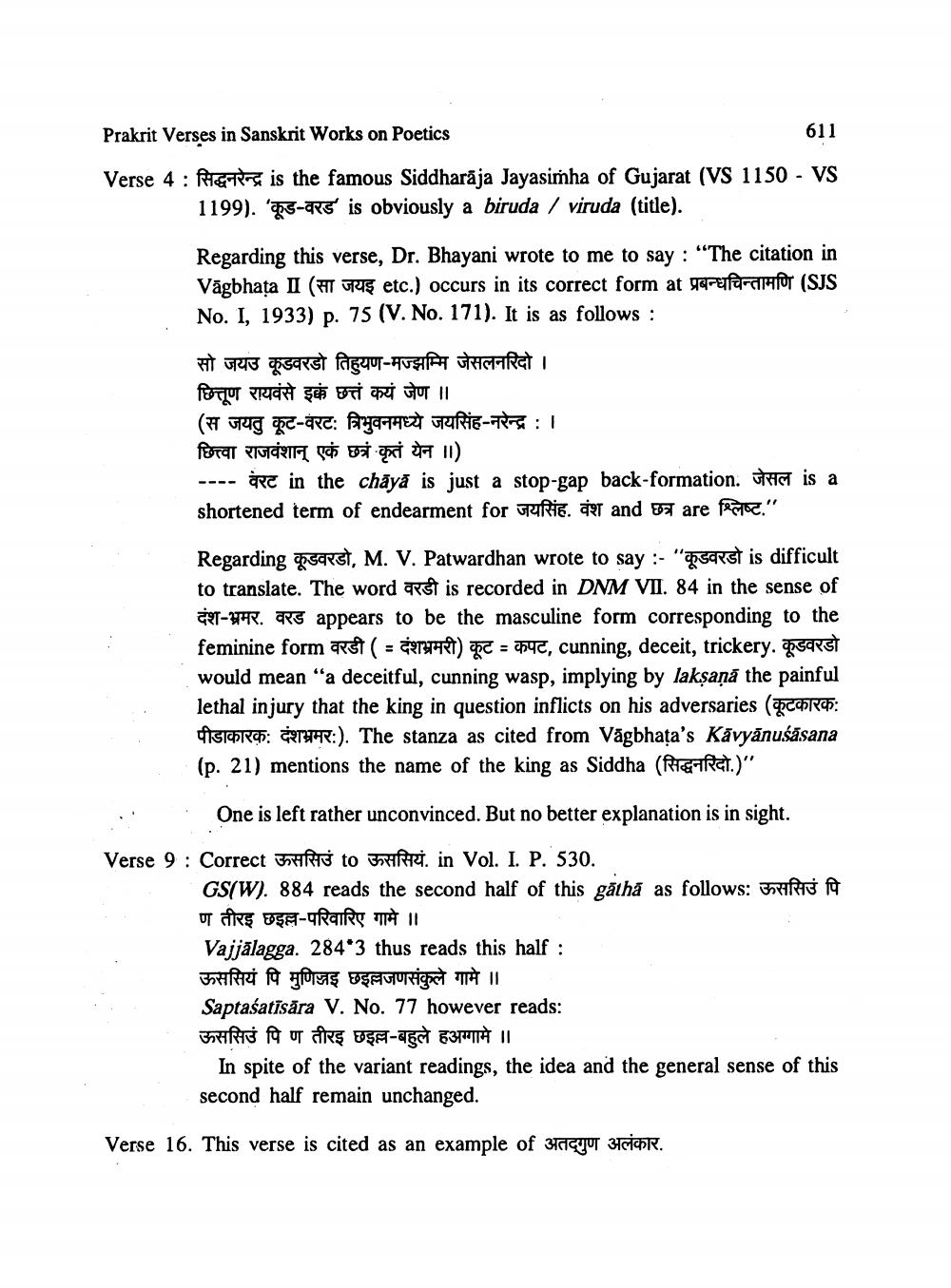________________
Prakrit Verses in Sanskrit Works on Poetics
611
Verse 4 : सिद्धनरेन्द्र is the famous Siddharaja Jayasimha of Gujarat (VS 1150 - VS
1199). 'कूड-वरड is obviously a biruda / viruda (title).
Regarding this verse, Dr. Bhayani wrote to me to say : "The citation in Vagbhata II (सा जयइ etc.) occurs in its correct form at प्रबन्धचिन्तामणि (SJS No. I, 1933) p. 75 (V.No. 171). It is as follows :
सो जयउ कूडवरडो तिहुयण-मज्झम्मि जेसलनरिंदो । छितूण रायवंसे इक्कं छत्तं कयं जेण ॥ (स जयतु कूट-वरट: त्रिभुवनमध्ये जयसिंह-नरेन्द्र : । छित्वा राजवंशान् एकं छत्रं कृतं येन ॥) ---- वरट in the chaya is just a stop-gap back-formation. जेसल is a shortened term of endearment for जयसिंह. वंश and छत्र are श्लिष्ट."
Regarding कूडवरडो, M. V. Patwardhan wrote to say :- "कूडवरडो is difficult to translate. The word as is recorded in DNM VII. 84 in the sense of दंश-भ्रमर. वरड appears to be the masculine form corresponding to the feminine form वरडी ( = दंशभ्रमरी) कूट = कपट, cunning, deceit, trickery. कूडवरडो would mean “a deceitful, cunning wasp, implying by lakṣaṇā the painful lethal injury that the king in question inflicts on his adversaries (कूटकारक: पीडाकारक: दंशभ्रमर:). The stanza as cited from Vagbhata's Kavyānusāsana (p. 21) mentions the name of the king as Siddha (सिद्धनरिदो.)"
One is left rather unconvinced. But no better explanation is in sight. Verse 9 : Correct ऊससिउं to ऊससियं. in Vol. I. P. 530.
GS(W). 884 reads the second half of this gatha as follows: ऊससिउं पि ण तीरइ छइल्ल-परिवारिए गामे ॥ Vajjalagga. 284*3 thus reads this half : ऊससियं पि मुणिज्जइ छइलजणसंकुले गामे || Saptaśatīsāra V. No. 77 however reads: ऊससि पि ण तीरइ छइल्ल-बहुले हअग्गामे ||
In spite of the variant readings, the idea and the general sense of this second half remain unchanged.
Verse 16. This verse is cited as an example of अतद्गुण अलंकार.




